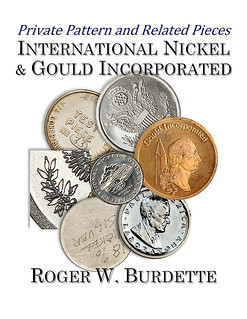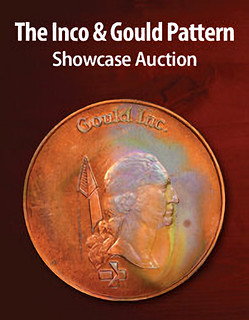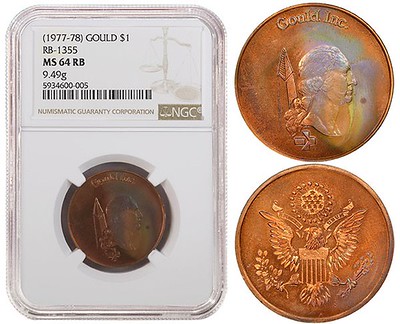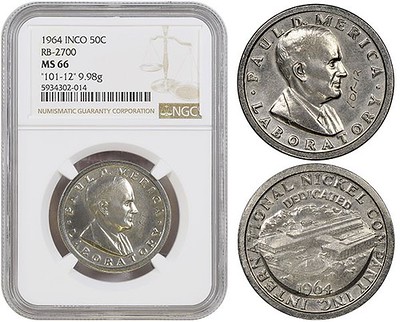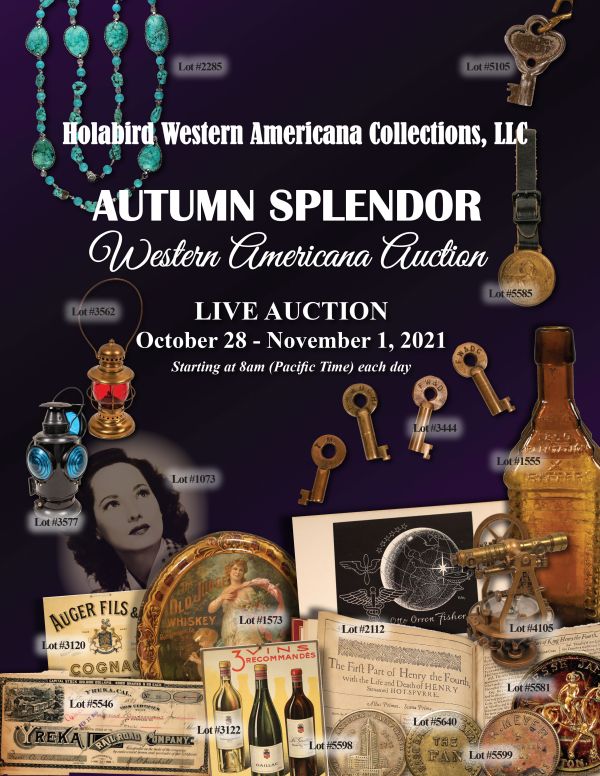
PREV ARTICLE
NEXT ARTICLE
FULL ISSUE
PREV FULL ISSUE
HERITAGE INCO & GOULD PATTERN AUCTIONThe November 1, 2021 Heritage Inco & Gould Pattern Showcase Auction features many pieces examined and illustrated Roger Burdette's 2019 book Private Pattern and Related Pieces: International Nickel & Gould Incorporated. An article from NGC has more information. -Editor More than 150 patterns and blank planchets that were created amid major changes in US coinage in the 1960s and 1970s — all certified by Numismatic Guaranty Company™ (NGC®) — are being offered in a Heritage Auctions sale. Bidding is already underway for the INCO and Gould Patterns Showcase Auction, which concludes on November 1, 2021. Among the highlights is a (1977-78) Gould $1 graded NGC MS 64 RB (lot 46127) with impressive copper toning. In the 1970s, Gould Inc. struck tokens such as this one showing George Washington in order to demonstrate new compositions for planchets. At the time, the US Mint was considering how to shrink the Eisenhower Dollar, which many people found too inconvenient to carry around. The sale also includes International Nickel Co. (INCO) patterns from a decade earlier, such as this 1964 INCO 50 Cents graded NGC MS 66 (lot 46029). It shows Paul D. Merica, the former president of INCO. The US Mint at the time was exploring options for planchets as the era of silver in circulating coinage was coming to a close.
Opportunities amid the farewell to silver
In the meantime, production of the old .900 fine silver coinage occurred concurrently with the new The US Mint had known as early as 1964 that the removal of silver from circulating coins was inevitable, and it didn't wait for such a law to be passed before testing suitable replacement alloys. The new coins would have to look somewhat like silver to gain public acceptance, and they would also have to function as well as the old issues in parking meters, vending machines and elsewhere. Exactly what composition would prove to be suitable required extensive testing, and to perform these tests the Mint drew upon the expertise of American industry.
INCO test pieces are collectible today
During 1964-65, INCO contracted with Medallic Art Company to strike sample pieces from its various alloys. The resulting token-like
The extensive series of INCO trial pieces are known with a variety of designs that simulate the sort of elements that would be used on actual coins. A portrait of Paul D. Merica, former president of the company, was paired with a view of the research facility named for him as the obverse and reverse designs for tokens used extensively for testing in 1964. These Other test pieces bear text only, while some have just raised mounds on either side to simulate a typical height of relief. Most commonly used are assorted blends of copper and nickel, but other pieces were made that include silicon, chromium, zinc, aluminum, vanadium — the list of non-precious metals tested is a long one.
Another major coin change
As in 1965, the question arose of what composition to use for the proposed These samples proved unsatisfactory to the Mint for a variety of technical reasons, and that was when the decision was made to go with proven clad composition. Gould, however, was not inclined to give up so easily. From 1976 to 1978, it produced a series of test tokens featuring a portrait of George Washington recycled from the products of Washington Mint Inc. This was paired with three slightly different versions of the Great Seal of the United States for the reverse. The test pieces were produced in a variety of compositions, and among the metals utilized were aluminum, copper, iron, nickel and titanium. The US Mint was not persuaded to change its plans, however, but the Gould specimens survive in limited numbers as fascinating reminders of what might have been.
To read the complete article, see:
This sale is a great opportunity for pattern collectors; this is the first appearance in the market for most of these pieces. -Editor
To view the auction lots, see:
To read the earlier E-Sylum article, see:
Wayne Homren, Editor The Numismatic Bibliomania Society is a non-profit organization promoting numismatic literature. See our web site at coinbooks.org. To submit items for publication in The E-Sylum, write to the Editor at this address: whomren@gmail.com To subscribe go to: https://my.binhost.com/lists/listinfo/esylum All Rights Reserved. NBS Home Page Contact the NBS webmaster 
|
